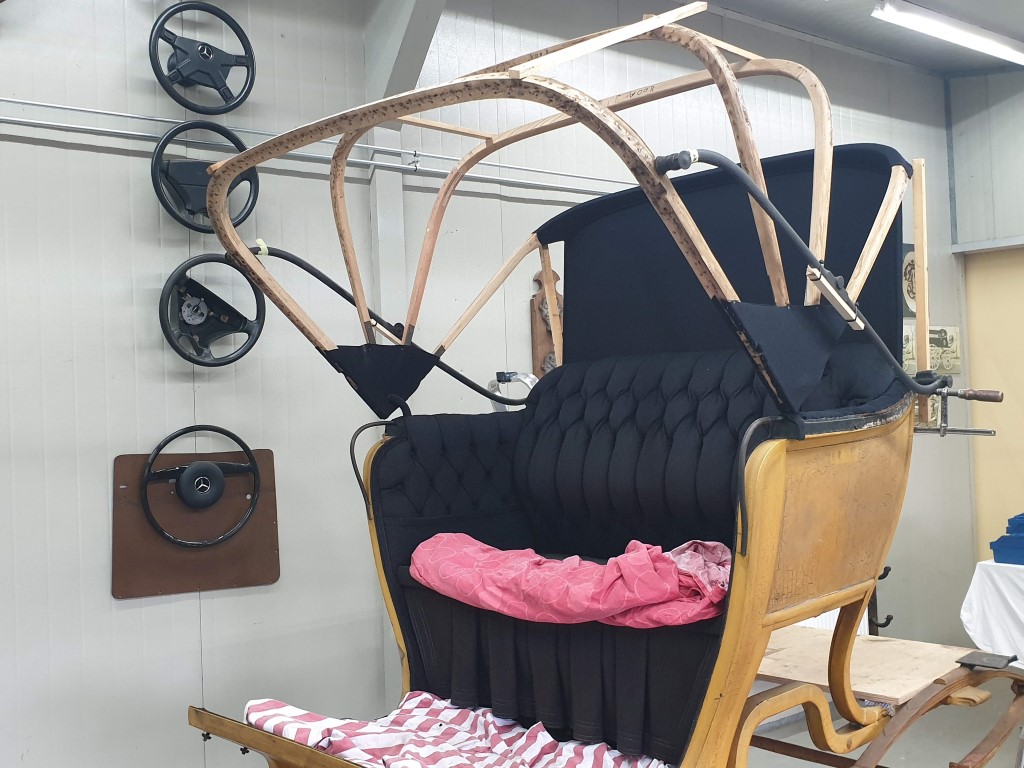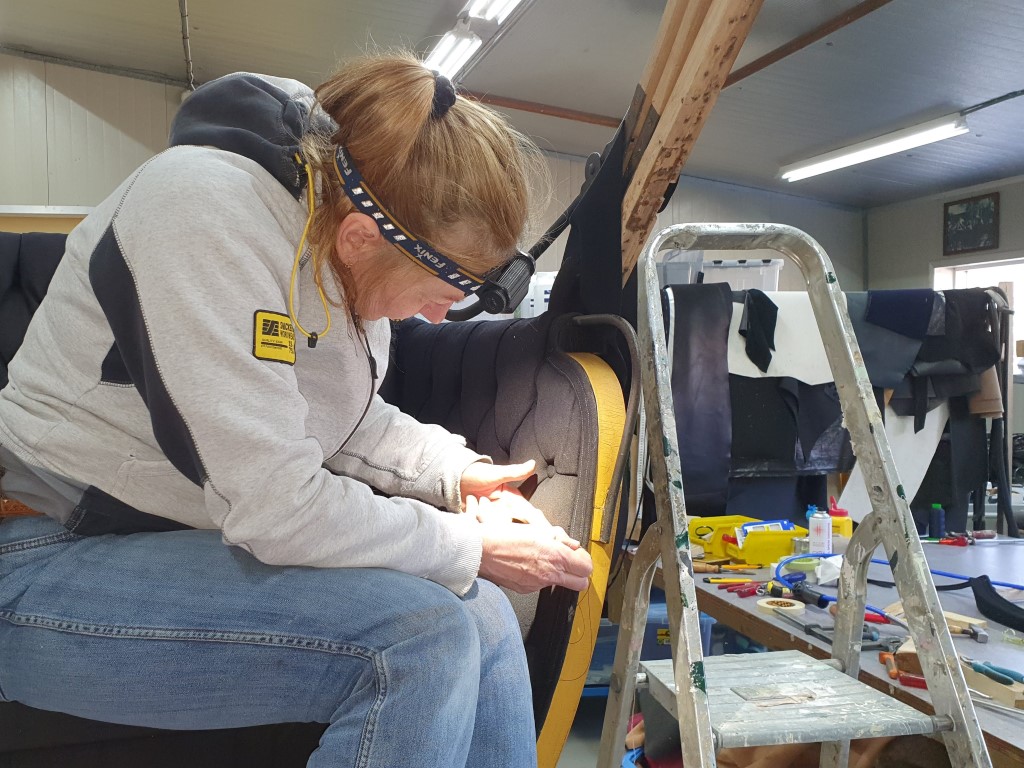How heaven came about

After Castle de Haar's Napoleon was fully balanced, the carriage was taken apart again for the "cleaner" work of restoration: cleaning and recounting the old upholstery. Countless moth holes were sealed with tiny patches and cracks invisibly sewn back together. Finally, it was the turn of the hood, whose "sky" had been damaged almost beyond repair by moth, mouse, mold....
While restorer Maria Stolk was fully absorbed in the tiny moth holes in the upholstery, her husband Piet took care of the roof trusses that were too far gone by woodworm. He did not make new rafters, but only replaced the parts that were too far gone. Now for the cloth fabric for the inside.
It sounds like the title of a book 'How the sky came to be'.... A canopy is the upholstery attached to the inside of the rafters. The upholstery looks so simple to replace when you look at it. A large piece of fabric, a few staples and you're done. But of course it doesn't work that way. The fabric has to fold away neatly when the hood is down and be evenly stretched when the hood is up. And that with cloth that is difficult to arrange in a corner without folding. One art of a canopy is to hang it invisibly: the cloth fabric is sewn to suspension straps that are fastened to the canopy rafters with nails.
Giving up is not an option
"At the back-top you can see the truss in sight, neatly upholstered along with it. You don't come across this very often," Maria Stolk mentions a technical detail that reveals that the Napoleon of Castle de Haar could have an extra layer of upholstery under the grass. The Stolks are very experienced with this upholstery work, and yet, "It is the most difficult heaven we have made so far." It's the shape: somewhat angular and deep. Maria has been repudiating "giving up is not an option..." several times over the past day, because nothing runs straight or in a smooth curve. "It's a difficult hood construction, with a lot of tension on the fabric. It was very labor intensive. We sewed everything by hand, partly in or on the carriage. Constantly hanging and fitting, and taking out again to get the suspension straps in the right position. And again and again and again. Until slowly it got better and better. I also now understand why the canopy is so loose from the rafters. The upholsterer at the time had to work very hard to get a clean headliner in there at all. And so do we now. But, it is in and we are satisfied. Now the leather on the outside of that same canopy, that promises something..."
The four carriages in this project come from the management of Borg and Nationaal Rijtuigmuseum Nienoord and are transferred to long-term loan by Kasteel De Haar. This project has been made possible in part by VZW Pater David, Prins Bernhard Cultuurfonds, Stichting Bonhomme Tielens, VSB Fonds, Mondriaan Fonds and Stichting kasteel de Haar. The Hippomobile Heritage Foundation is supervising the implementation and providing communication.


Recent Comments